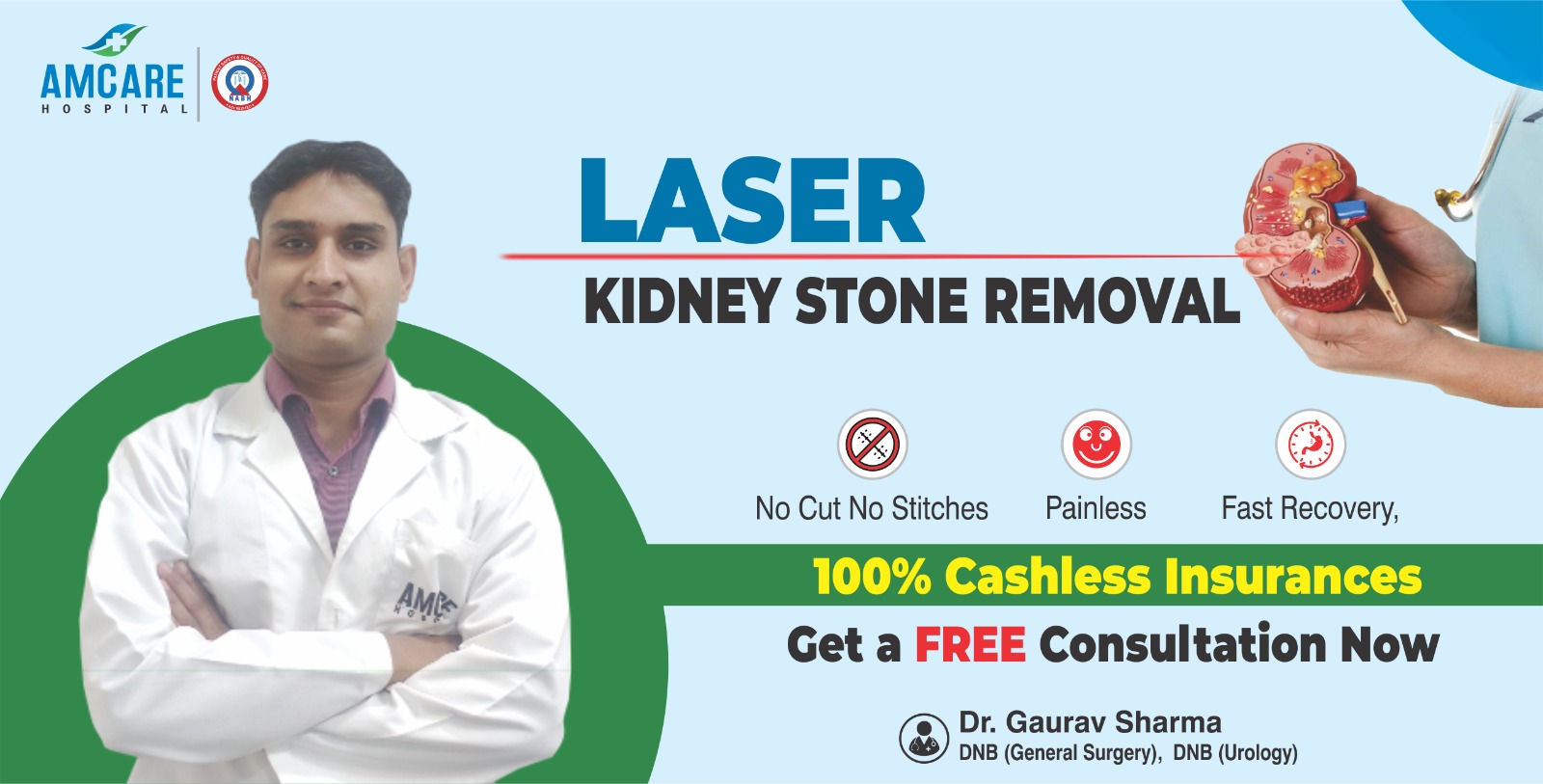Laser Kidney Stone Removal in Chandigarh

Get a FREE Expert Consultation & Cost Estimate

Why Painless Laser Kidney Stone Treatment?
- Most Advanced Procedure Available
- More effective than the traditional conventional method
- No Cut, No Stitches
- Easy & Quick Recovery
- 45 Minute Procedure | 1 Day Discharge

Why Amcare Super Speciality Hospital ?
- Hi-Tech Laser Treatment Center
- One of the Most Reputed & Trusted Hospitals in Region
- 24×7 Expert Team of Doctors Doing Most Complex Surgeries & Procedures Routinely
- 100% Cashless Treatment for Insurance & TPA Patients
- Excellent Patient Care Services
- 100% Affordable Fixed Price Packages
- Free Pickup & Drop Facility Available
- 0% EMI Facility Available

Why early Kidney Stone removal is Important ?
To Avoid :
- Further Permanent Damage to Kidney
- Kidney or Urinary infections
- Growth of stone size
- Extreme pain
FAQ
The larger a stone is, the lesser the chances are that it will pass without surgery. Surgical treatment is usually recommended for stones 5 mm in size and larger, as well as for patients who fail conservative management, or the their stone is obstructing the urinary passage, or in any other emergency situation that requires urgent removal of the stone.
In many cases kidney stones can be treated without surgery. Ninety per cent of stones pass by themselves within three to six weeks. In this situation, the only treatment required is pain relief. However, pain can be so severe that hospital admission and very strong pain-relieving medication may be needed. However, sometimes even smaller sized stones may even require surgical treatment depending upon the time, size & location of the stone.
After the kidney stone formation, the stone may stay in the kidney or travel down the urinary tract into the ureter. Sometimes, small sized stones move out of the body in the urine without causing too much pain. But stones that don’t move may cause a back-up of urine in the kidney, ureter, the bladder, or the urethra. This may cause permanent decreased urine output, urinary tract infection (UTI), bleeding or permanent damage to the kidney if the stone is not removed timely.
The surgery takes 20 to 45 minutes. Typical stay period in hospital is 1 to 2 days. In some cases, a stent is placed in your kidney for a few days to help urine drain & to help decrease the risk of infections. Your doctor might do an X-ray or ultrasound a few weeks later to check the recovery progress or see whether any parts of the stone is left.
If it becomes stuck in the ureters, it may block the flow of urine and cause the kidney to swell and the ureter to spasm, which can be very painful. In this situation, you may experience these signs and symptoms: Severe, sharp pain in the side and back, below the ribs. Pain that radiates to the lower abdomen and groin.
While the recovery times vary for each procedure, most patients are fully recovered within six weeks and can resume their normal activities. Many patients feel much better the first week, but care must be taken to assure that healing is complete. But with the advanced laser stone removal technique you can resume routine activity from the next day of treatment.
